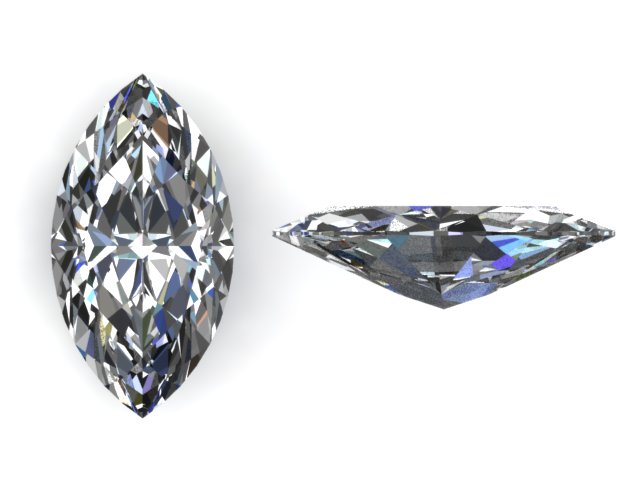
Marquise Shape Also known as the navette (little ship in French) is making a comeback in the engagement ring world. It was very popular in the seventies and eighties. This shape was wildly popular due to the “face up” look size wise of this cut.
Place a 1 carat marquise next to a 1 carat round brilliant cut and the marquise looks much bigger. And I speak from experience from this comparison, my best friend in the seventies had the same carat weight ring in a marquise as my round brilliant and hers looked like an ice skating rink! The marquise shape accentuates a long slender look on the ring finger. The table facet is what makes the look of this cut. Let’s explain the importance of the table facet, it gathers light from above and reflects it back to the observer or directs it into the diamond’s interior. This vintage cut features 56 facets and an elliptical shape that culminates in points. These points must be protected by V-shaped tips; this is a delicate part of this shape. If you compared it to a round brilliant cut, which has 57-58 facets, it is similar in facet count. Keep in mind the scintillation of a round brilliant that you may not get in the marquise. The difference is that the table is much larger in a marquise than a round brilliant. There is a drawback to this shape, if not cut well, it’s called the bow-tie effect. It happens in the center of the gem where you will see a darkening (loss of brilliance) shaped just like a bow tie!
The marquise cut dates back to around the 18th century when King Louis XV of France commissioned a jeweler to design a cut that resembled, as the story goes, the lips of his mistress, Jean Antoinette Poisson! She was the Marchioness Madame de Pompadour. Marquise refers to a hereditary rank below a duke but above that of a count. It gradually morphed into the shape we recognize today.





